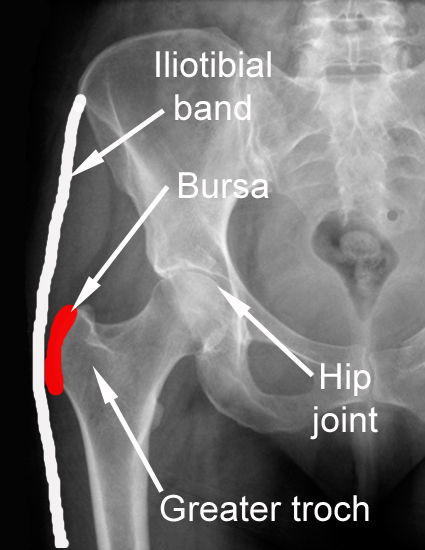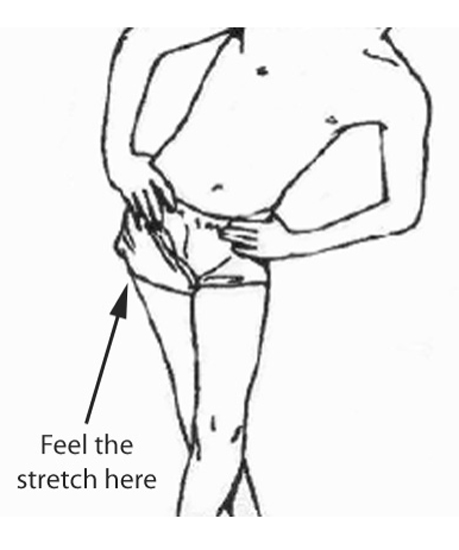Trochanteric Bursitis (a cause of pain on outer side of hip region)
Trochanteric bursitis is a condition where a sheet of flat, strong tissue called the iliotibial band (ITB) that runs from the outer rim of the pelvis (the ileum) down to the outer (lateral) aspect of the knee will cause some rubbing against the part of the femur called the greater trochanter.
In the diagrams below, we can see the iliotibial band (ITB), which is a sheet of tissue that goes on the lateral aspect (the outer side) of the pelvis and hip down the the knee. Deep to the ITB, there is a bursa, which is a lubricating sac, which can get inflamed, causing pain that can be reproduced by touching or pressing on this area.
There is no particular reason why one person vs another might get this condition, or why one side might hurt and the other not, but the good news is that it usually gets better.


Treatment Options
Stretching program: Imagine there is a line drawn down the middle of your body. You can stretch the ITB by bringing your knee across the midline. There can also be some relief by trying an anti-inflammatory medication, and locally applying ice to the painful area. For the stretching by itself to give relief, 4-6 weeks of regular stretching may be required.
Cortisone injection: This treatment is the one most often chosen and is the most direct and most effective. After cleaning the side of the hip over the painful area with betadine to prevent infection, and after using a freezing spray on the skin, the bursa can be injected with a mixture of numbing medicine (lidocaine) and cortisone (depo-medrol). Usually, there is immediate relief from the numbing medicine, and the cortisone kicks in later, usually at 2-4 days after the injection. If there is more pain the day after the injection, that result can occur since the numbing has worn off and the cortisone hasn’t started working yet. In most cases, the pain will subside again in a few days.

